Equivalence relations, contextual control, and naming
- PMID: 17191757
- PMCID: PMC1679970
- DOI: 10.1901/jeab.2006.82-05
Equivalence relations, contextual control, and naming
Abstract
This paper reports two experiments that investigated the role of verbal behavior in the emergence and generalization of contextually controlled equivalence classes. During both experiments, participants were trained with two different combinations of the same easily nameable, yet formally unrelated, pictorial stimuli. Match-to-sample baselines for eight four-member classes were established under the contextual control of two colors. In the presence of one color, conditional relations were established between stimuli whose normative names rhymed. In the presence of the other color, conditional relations were established between stimuli whose normative names did not rhyme. Although, during Experiment 1, all participants demonstrated equivalence classes involving rhyming stimuli, none demonstrated the formation of nonrhyme equivalence classes. To investigate this finding, Experiment 2 evaluated whether participants would demonstrate both rhyme and nonrhyme equivalence classes given more extensive exposure to the experimental contingencies. All participants demonstrated contextually controlled rhyme and nonrhyme equivalence classes, although rhyme classes were demonstrated with greater facility than nonrhyme classes. Results indicate that visual stimuli are named, that verbal bases for stimulus classification can affect the emergence of contextually controlled equivalence classes, and that untrained contextually controlled conditional discriminations involving novel stimuli can emerge on the basis of participants' verbal behavior.
Figures
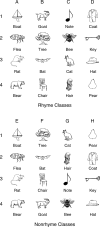
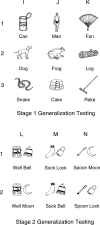
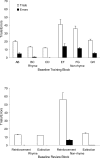
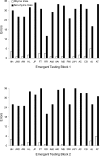
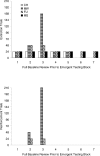
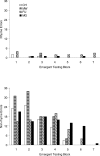
Similar articles
-
The development of functional and equivalence classes in high-functioning autistic children: the role of naming.J Exp Anal Behav. 1992 Jul;58(1):123-33. doi: 10.1901/jeab.1992.58-123. J Exp Anal Behav. 1992. PMID: 1645097 Free PMC article.
-
The transfer of contextual control over equivalence classes through equivalence classes: a possible model of social stereotyping.J Exp Anal Behav. 1991 Nov;56(3):505-18. doi: 10.1901/jeab.1991.56-505. J Exp Anal Behav. 1991. PMID: 1774542 Free PMC article.
-
Training intraverbal naming to establish equivalence class performances.J Exp Anal Behav. 2016 May;105(3):409-26. doi: 10.1002/jeab.203. Epub 2016 May 6. J Exp Anal Behav. 2016. PMID: 27151740
-
The Problem of Class Breakdown in Sidman's (1994, 2000) Theory about the Origin of Stimulus Equivalence.Perspect Behav Sci. 2023 Feb 1;46(1):217-235. doi: 10.1007/s40614-023-00365-2. eCollection 2023 Mar. Perspect Behav Sci. 2023. PMID: 37006605 Free PMC article. Review.
-
Toward a technology of derived stimulus relations: an analysis of articles published in the journal of applied behavior analysis, 1992-2009.J Appl Behav Anal. 2011 Spring;44(1):109-19. doi: 10.1901/jaba.2011.44-109. J Appl Behav Anal. 2011. PMID: 21541138 Free PMC article. Review.
Cited by
-
The multiple control of verbal behavior.Anal Verbal Behav. 2011;27(1):3-22. doi: 10.1007/BF03393089. Anal Verbal Behav. 2011. PMID: 22532752 Free PMC article.
-
Equivalence class formation in a trace stimulus pairing two-response format: effects of response labels and prior programmed transitivity induction.J Exp Anal Behav. 2009 Jul;92(1):57-84. doi: 10.1901/jeab.2009.92-57. J Exp Anal Behav. 2009. PMID: 20119522 Free PMC article.
-
Listening is behaving verbally.Behav Anal. 2008 Fall;31(2):145-61. doi: 10.1007/BF03392168. Behav Anal. 2008. PMID: 22478508 Free PMC article.
-
The role of naming in stimulus categorization by preschool children.J Exp Anal Behav. 2008 May;89(3):383-405. doi: 10.1901/jeab.2008-89-383. J Exp Anal Behav. 2008. PMID: 18540221 Free PMC article.
-
Using action dynamics to assess competing stimulus control during stimulus equivalence testing.Learn Behav. 2013 Sep;41(3):256-70. doi: 10.3758/s13420-013-0102-1. Learn Behav. 2013. PMID: 23378287
References
-
- Adams B.J, Fields L, Verhave T. Effects of test order on intersubject variability during equivalence class formation. The Psychological Record. 1993;43:133–152.
-
- Arntzen E. Probability of equivalence formation: Familiar stimuli and training sequence. The Psychological Record. 2004;54:275–291.
-
- Bentall R.P, Dickins D.W, Fox S.R.A. Naming and equivalence: Response latencies for emergent relations. The Quarterly Journal of Experimental Psychology. 1993;46B:187–214.
Publication types
MeSH terms
LinkOut - more resources
Full Text Sources

